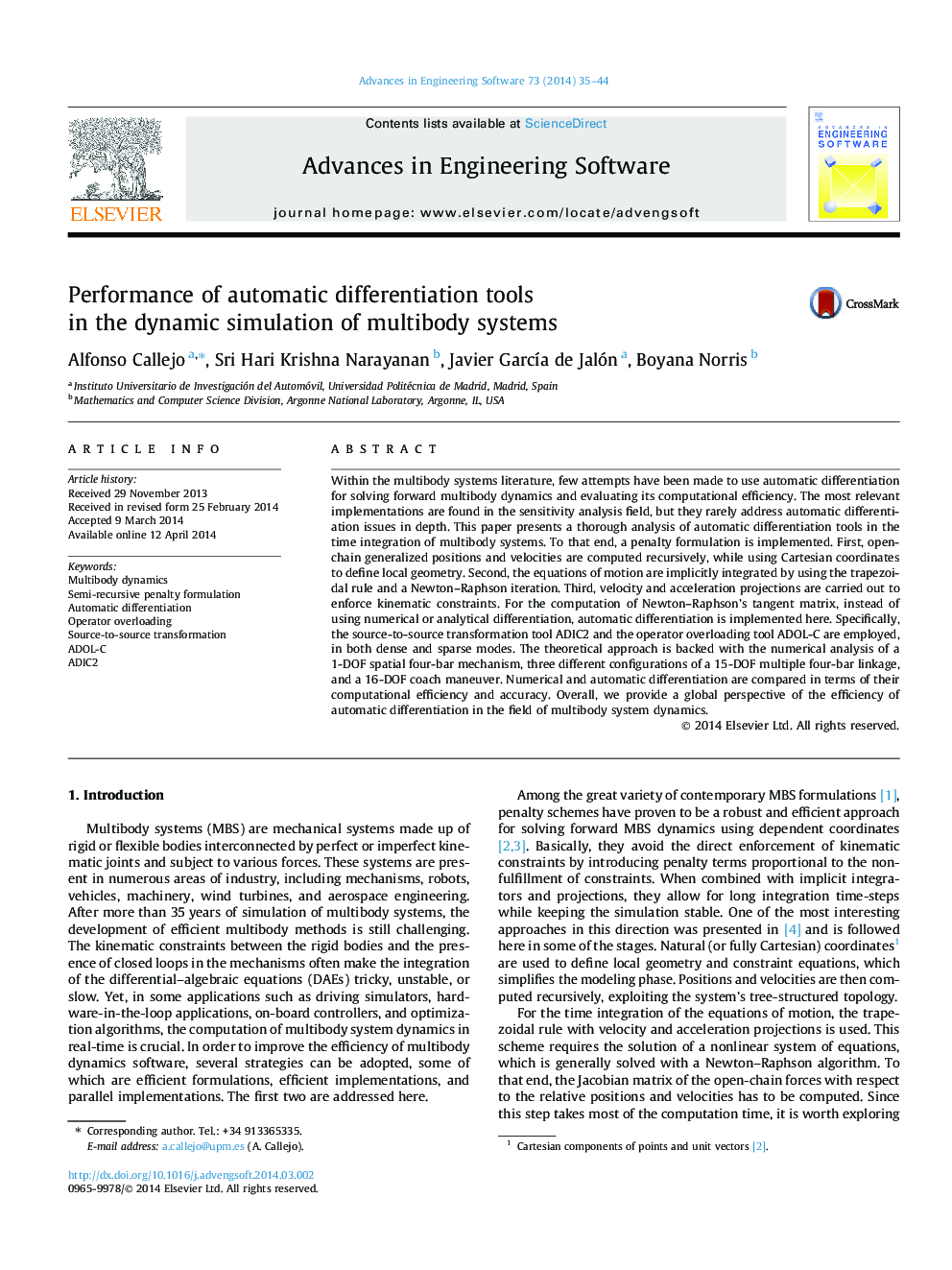| Article ID | Journal | Published Year | Pages | File Type |
|---|---|---|---|---|
| 566109 | Advances in Engineering Software | 2014 | 10 Pages |
•A multibody dynamics code based on a semi-recursive penalty formulation is presented.•Two automatic differentiation tools, ADIC2 and ADOL-C, are used.•Five numerical models are used for validation, including a realistic coach model.•The advantages of exploiting Jacobian sparsity using automatic differentiation are shown.
Within the multibody systems literature, few attempts have been made to use automatic differentiation for solving forward multibody dynamics and evaluating its computational efficiency. The most relevant implementations are found in the sensitivity analysis field, but they rarely address automatic differentiation issues in depth. This paper presents a thorough analysis of automatic differentiation tools in the time integration of multibody systems. To that end, a penalty formulation is implemented. First, open-chain generalized positions and velocities are computed recursively, while using Cartesian coordinates to define local geometry. Second, the equations of motion are implicitly integrated by using the trapezoidal rule and a Newton–Raphson iteration. Third, velocity and acceleration projections are carried out to enforce kinematic constraints. For the computation of Newton–Raphson’s tangent matrix, instead of using numerical or analytical differentiation, automatic differentiation is implemented here. Specifically, the source-to-source transformation tool ADIC2 and the operator overloading tool ADOL-C are employed, in both dense and sparse modes. The theoretical approach is backed with the numerical analysis of a 1-DOF spatial four-bar mechanism, three different configurations of a 15-DOF multiple four-bar linkage, and a 16-DOF coach maneuver. Numerical and automatic differentiation are compared in terms of their computational efficiency and accuracy. Overall, we provide a global perspective of the efficiency of automatic differentiation in the field of multibody system dynamics.
